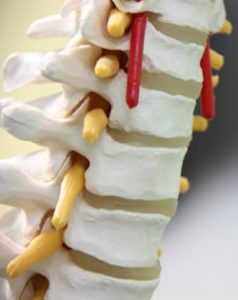Risks of Minimally Invasive Spine Surgery
With technology taking great leaps, it is now possible to perform a number of spinal surgeries using minimally invasive techniques. These minimally invasive back operations are much safer than traditional open surgery and unlike older back surgery procedures; patient does not require a really long time to recover from these surgeries. The different types of minimally invasive back operations include:
- Anterior longitudinal ligament resection
- Complex minimally invasive surgery with lateral approach
- Extreme lateral interbody fusion (XLIF)
- Lateral lumbar interbody fusion
- Percutaneous posterior pedicle screw fixation
- Minimally invasive surgical corpectomy
- Smith-Petersen osteotomy
- Pedicle subtraction osteotomy
- Endoscopic discectomy
- Microendoscopic discectomy
- Laser discectomy
- Posterior cervical microforaminotomy (PCMF)
- Anterior cervical discectomy
- Artificial cervical disc replacement or total disc replacement (TDR)
- Anterior lumbar interbody fusion (ALIF)
- Mini ALIF
- Transformal lumbar interbody fusion (TLIF)
- Extreme lateral interbody fusion (XLIF)
- Video-assisted thoracoscopic surgery (VATS)
- Thoracotomy
- Laminectomy
- Laminotomy
- Kyphoplasty
Possible Complications of Minimally Invasive Spine Surgery
 It is true that minimally invasive procedures are much less complicated than traditional open surgery. However, just like other invasive procedures, they also come with their set of risks and problems. This is why it is always advisable to consult a doctor and then sit down with him to discuss all the possible complications that may occur after a minimally invasive back surgery. Let us take a brief look at the possible complications:
It is true that minimally invasive procedures are much less complicated than traditional open surgery. However, just like other invasive procedures, they also come with their set of risks and problems. This is why it is always advisable to consult a doctor and then sit down with him to discuss all the possible complications that may occur after a minimally invasive back surgery. Let us take a brief look at the possible complications:
- May not work well for every spinal disorder and disease
- May take longer operative time then traditional open surgery
- My cause increased exposure to radiations
- For fusion cases there may be problem of less surface area of bone exposed
- Complicated fixture of spinal fluid leak if one occurs
- Less availability of surgeons who are adept at performing these procedures

